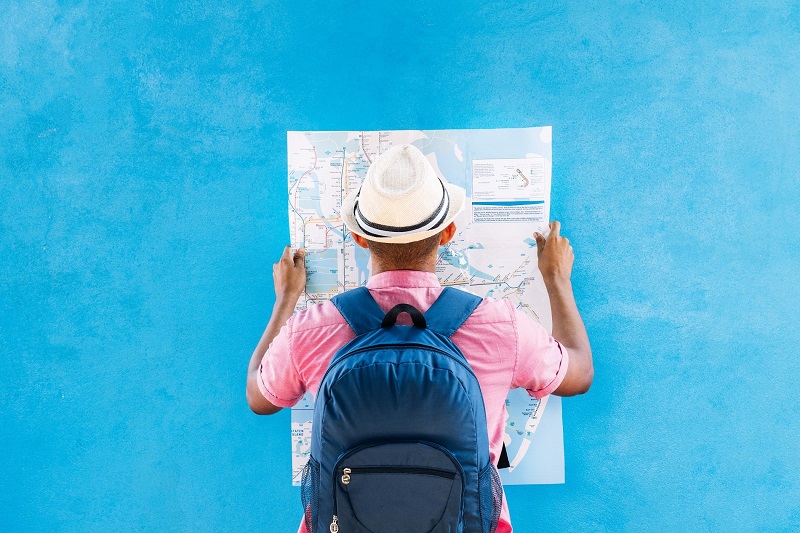Tropical climates can be a paradise with their lush landscapes and warm temperatures, but they also come with unique health challenges. When I first traveled to a tropical destination, I quickly learned that staying safe and healthy required a bit more preparation than I anticipated. From the intense sun to the potential for mosquito-borne illnesses, there’s a lot to consider.
In this article, I’ll share some practical tips to help you enjoy your tropical adventures while keeping health risks at bay. Whether you’re planning a vacation or moving to a tropical region, these insights will ensure you can make the most of your time without compromising your well-being.
Understanding Tropical Climates
Tropical climates cover regions between the Tropic of Cancer and the Tropic of Capricorn. These areas experience high temperatures and significant humidity year-round. While stunning beaches and lush rainforests lure travelers, it’s essential to understand the climate to stay safe and healthy.
Weather Patterns
Tropical regions tend to have two main seasons: wet and dry. During the wet season, heavy rains and high humidity are typical. This season boosts vegetation growth but also raises the risk of waterborne diseases. The dry season, conversely, offers less rainfall and lower humidity but can still be intensely hot. Understanding these patterns helps in planning outdoor activities and packing appropriate clothing.
Common Health Risks
Several health risks accompany tropical climates. Mosquitoes thrive in these regions, spreading diseases like malaria, dengue fever, and Zika virus. I always carry insect repellent and wear long sleeves in mosquito-prone areas. High temperatures can lead to dehydration and heatstroke, making it crucial to drink plenty of water. Wearing hats and applying sunscreen also protect against the strong tropical sun.
Adapting to Humidity
Humidity in tropical climates can be overwhelming. I find that light, breathable fabrics keep me comfortable in high humidity. These fabrics, such as cotton and linen, wick moisture away from the skin. Staying in air-conditioned or well-ventilated spaces helps mitigate the effects of humidity. When adjusting to a new climate, it’s essential to pace yourself and avoid strenuous activities during peak heat times.
Hydration and Nourishment
Staying hydrated is critical in tropical climates. I always carry a reusable water bottle and opt for electrolyte-rich drinks, especially after intense physical activity. Local fruits like mangoes, coconuts, and papayas provide not only hydration but also essential nutrients. They’re abundant in tropical regions and can be a delicious way to stay nourished.
Air Quality
Air quality can be a concern in some tropical regions, often due to pollution or natural events like forest fires. I keep an eye on local air quality reports and avoid outdoor activities when air quality is poor. In rural areas, burning of agricultural waste might affect air quality. Masks can help mitigate the effects of particulate matter in such cases.
Cultural and Environmental Factors
Being aware of local customs enhances the experience and ensures respectful interactions. Some tropical regions have specific dress codes or cultural practices that differ significantly from what we’re used to. respecting these customs not only fosters positive interactions but also helps integrate safety measures naturally, such as wearing appropriate clothing to avoid insect bites and sun exposure.
Understanding tropical climates isn’t just about knowing weather patterns but also adapting lifestyle choices to stay healthy. Whether enjoying an exotic trip or settling in a new tropical home, knowledge and preparation go a long way in ensuring a safe, enjoyable experience.
Common Health Risks
Traveling to tropical climates presents unique health risks. It’s important to understand these to enjoy your time safely.
Heat-Related Illnesses
High temperatures in tropical regions can lead to heat-related illnesses. Heat exhaustion is common, marked by symptoms like heavy sweating, weakness, and dizziness. Extreme cases can progress to heatstroke, a severe condition characterized by confusion, high body temperature, and potential loss of consciousness. Preventing heat-related illnesses involves staying hydrated, wearing lightweight clothing, and avoiding excessive sun exposure during peak hours (10 AM to 4 PM). Carrying water and seeking shade when outdoors also helps. Travelers should recognize early symptoms and act promptly to avoid severe health issues.
Waterborne Diseases
Contaminated water sources in tropical regions often harbor diseases. Diarrheal diseases like cholera and dysentery are prevalent, causing dehydration and severe discomfort. Hepatitis A and typhoid fever also spread through contaminated food and water. Drinking bottled or filtered water reduces risks. Avoiding ice cubes and eating well-cooked food further minimizes exposure. Hand hygiene plays a crucial role; washing hands with soap before meals and after using the restroom can prevent many infections. Always be cautious with street food to reduce the chance of waterborne diseases.
Insect-Borne Diseases
Insect-borne diseases are a significant concern in tropical climates. Mosquitoes carry diseases such as malaria, dengue fever, and Zika virus. Wearing long-sleeved clothing and using insect repellent containing DEET or picaridin helps reduce bites. Sleeping under mosquito nets, especially in regions with high malaria rates, offers added protection. Tick-borne diseases like Lyme disease and Rocky Mountain spotted fever also pose risks, though less common in tropical regions. Checking your body and clothes for ticks after outdoor activities is a useful preventive measure. Vaccinations and prophylactic medications are available for some diseases and should be considered before traveling.
Health Tips for Staying Safe
Tropical climates require specific health considerations. Here are some tips to help maintain your well-being.
Hydration and Nutrition
In tropical climates, drinking plenty of fluids helps prevent dehydration. Adults should aim for at least 2-3 liters of water daily. Fruits like mangoes, pineapples, and watermelons provide hydration and essential nutrients. Electrolyte drinks can replace lost minerals, especially after physical activity.
Eating balanced meals with a mix of proteins, carbohydrates, and fats keeps energy levels up. Fresh, local produce typically offers the best sources of vitamins and minerals. Foods like coconut water and bananas help replenish electrolytes naturally. Avoid street food unless certain it’s prepared hygienically to prevent foodborne illnesses.
Appropriate Clothing
Wearing the right clothing protects you from the sun and insects. Light, loose-fitting clothes made of natural fibers like cotton offer comfort and breathability. Long-sleeved shirts and long pants provide extra protection against mosquitoes. Neutral or light colors are preferable since they absorb less heat and attract fewer insects.
Footwear matters too. Closed-toe shoes help prevent injuries and insect bites. In rainy seasons, waterproof sandals or boots can keep your feet dry and protected. Hats with wide brims shield your face and neck from intense sun exposure, adding an extra layer of protection.
Sun Protection
Protecting yourself from the sun’s intense rays minimizes the risk of sunburn and long-term skin damage. Apply sunscreen with at least SPF 30 to all exposed skin, reapplying every two hours and after swimming. Look for a water-resistant option for better coverage.
Using accessories like sunglasses with UV protection shields your eyes from harmful rays. Finding shade during peak sun hours, typically between 10 AM and 4 PM, reduces direct exposure. If available, seek air-conditioned spaces to cool down and avoid prolonged sun exposure during these times.
Safety Tips for Outdoor Activities
Outdoor activities in tropical climates can be fun and adventurous if proper safety measures are taken.
Safe Swimming Practices
Swimming in tropical waters requires some caution. Strong currents and tides present a significant risk, so it’s essential to swim in designated areas supervised by lifeguards. Always check local advisories for jellyfish or other harmful marine life before entering the water.
Wear appropriate swimwear and use reef-safe sunscreen to protect both your skin and the environment. If snorkeling or diving, ensure all equipment is in good condition and fits correctly. It’s especially crucial to stay hydrated before and after swimming, as heat and humidity can lead to dehydration quicker than you might realize.
Swimming with a buddy is safer, as it allows you to assist each other in case of emergencies. If swimming in rivers or lakes, avoid areas known for strong currents or contaminants. Beware of underwater hazards, like rocks or vegetation, which might entangle or harm you. Finally, always rinse off after swimming in natural bodies of water to remove salt, sand, and potential irritants.
Hiking and Exploring Precautions
When hiking or exploring tropical regions, preparation can prevent accidents and injuries. Wear moisture-wicking clothing and sturdy hiking boots to protect against rough terrain. Bringing a hat and sunglasses shields you from intense sun exposure. A backpack with essentials like water, snacks, a first aid kit, and a map or GPS device is crucial.
Stick to marked trails to avoid getting lost, and inform someone of your plans and expected return time. Watch your step, as tropical trails can be slippery and uneven. Regularly check for signs of dehydration or heat exhaustion, such as dizziness or excessive sweating, and take breaks in shaded areas to stay cool.
Insect repellents containing DEET or picaridin protect against mosquitoes and ticks. Carrying a whistle can be helpful in case you need to signal for help. Keep noise levels down to avoid disturbing wildlife, and always be aware of your surroundings to spot potential dangers like unstable ground, fallen trees, or aggressive animals.
Staying Alert to Weather Changes
Weather in tropical climates can change rapidly. Using a weather app to monitor local conditions helps you stay informed. Pay attention to warning signs of impending storms, like sudden temperature drops or darkening skies. It’s a good practice to seek shelter immediately when you notice these signs.
Bring a waterproof bag to protect electronics and important documents from sudden rain showers. Wearing quick-dry clothing ensures comfort even if you get wet. Always have an emergency plan and know the locations of the nearest shelters or safe areas.
Flash flooding is a risk in tropical areas, especially during heavy rains. Avoid crossing rivers or streams with high water levels, and seek higher ground if flooding occurs. By staying informed and prepared, you can minimize weather-related risks and enjoy your outdoor activities safely.
Preparing a Travel Health Kit
Traveling to tropical climates poses unique health challenges. A well-prepared travel health kit can make a significant difference.
Essential Medications
Carry medications for common ailments in tropical climates. Include antimalarials if needed, as prescribed by a healthcare provider. Bring antihistamines for allergies and anti-diarrheal medications for digestive issues. Pack pain relievers like ibuprofen for headaches or muscle pain.
If prescribed medication, carry enough for the entire trip plus extra in case of delays. Example: I always bring an additional week’s worth of my prescriptions. Include a copy of your prescriptions in case you need a refill.
Depending on the destination, consider antibiotics for bacterial infections. Consult a healthcare provider to get the appropriate ones. Keep a list of emergency contact numbers, including your doctor’s, in your kit.
First-Aid Supplies
First-aid supplies are crucial for minor injuries. Pack adhesive bandages for cuts, blister pads for feet, and antiseptic wipes for cleaning wounds. Include medical tape and sterile gauze for more significant injuries.
Don’t forget tweezers and small scissors. These come in handy for removing splinters and cutting bandages. Bring a digital thermometer to monitor fever, a potential sign of serious illnesses in tropical regions.
Hydrocortisone cream can relieve itching from insect bites or rashes. Consider adding rehydration salts to prevent dehydration, common in hot and humid climates. Finally, pack a small first-aid manual to handle emergencies with confidence.
By carefully selecting the items in your travel health kit, you’ll be more prepared to handle unexpected health issues while enjoying your tropical adventure.
Conclusion
Staying safe and healthy in tropical climates doesn’t have to be daunting. With a bit of preparation and mindfulness, you can enjoy your time in these vibrant regions without compromising your well-being. Remember to stay hydrated, protect yourself from the sun and insects, and be cautious with your food and water choices.
Embrace the local culture and respect the environment to enhance your experience. Whether you’re lounging on a beach or trekking through a rainforest, these tips will help you make the most of your tropical adventure. Stay safe and enjoy the journey!










0 Comments